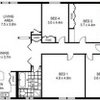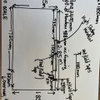Building New vs Renovating

One
of the most common questions we get asked is, “Should we keep our old house and
renovate it or demolish it and build new?” So what is the answer and what is
the most cost effective option?
Well,
until you get a professional expert to inspect your home, run through your
brief and understand your requirements and budget, this is too difficult to
answer as every circumstance varies, but below is a guide that shows the pros
and negatives for each option to consider when making that crucial decision!
BUILDING NEW
Pro’s
1. No restrictions on what you can build, apart from site overlays and council
building codes. The style, materials, layout is up to you.
2. Your design can work around the site utilising all aspects of sustainable design,
capturing breezes, airflow and the option to gain extra height on site by using
flat skillions roofs.
3. Building sqm rates for a new build are normally cheaper than renovation sqm rates and
therefore overall may be a cheaper option.
4. Minimal hidden variations or unknowns as every detail should be shown in the construction
drawings.
5. Construction time frames to completion is normally quicker when you are building new.
6. The option to build off the plan meaning the house is pre-designed then placed on
site saving time and costs.
Negatives
1. The quality of the build could be inferior as builders use pine framing instead of
hardwood. Many of today’s builders don’t have the knowledge and skill compared
to builders in the 50,60s.
2. New foundations and structural type may have to change to suit new building codes.
3. The new build may have to be situated in a new location on the property due to the
boundary setback and building codes which may mean certain restrictions
required on your property.
4. Removal of the existing house, clearing the site and preparing the site for new
structural footings may cost you a lot more money than you thought.
5. You may need to factor in the cost to rent/move elsewhere while you home is being
constructed.
6. You may not be able to stage your project and therefore financing upfront may be an
issue.
RENOVATING
Pro’s
1. You know what you are dealing with onsite so you can either renovate to match the
existing character of the house or build a new modern extension that may
contrast the existing house.
2. You may already have a good solid structurally sound house with fantastic hardwood
timbers or quality features that you can work with.
3. Potentially your house will be better built than a new home that is constructed with
inferior materials and where corners have been cut to meet construction
timeframes.
4. Your house may already have the street character and aesthetics which you may not be
able to achieve by building new.
5. You may have already closer setbacks than what is needed due to the building code
changing over time.
6. You may be able to stage the project so you can still live on the property during construction.
Negatives
1. The cost of renovating can be very expensive as there
can often be a lot of hidden costs and unknowns.
2. You will need between 5-10% contingency of your overall
budget required when renovating due to all of the unknowns that may be discovered
along the process.
3. You may need to select your builder more carefully. Does
your builder know how to renovate old houses or has he just done low set brick
veneer new houses? Take the time to look at the quality and style of homes that
the builder has produced.
4. If the house is in a character overlay you may be
controlled by council restrictions on what you can build.
5. The existing house may face the wrong orientation and
not capture the views. The house plan may not be right for the site or location.
6. Does the existing house how termites or rot that you
may not know about.
7. Does your existing house have street appeal? You may
need to factor this into a renovation also if another part of the house is
being modernised.




Tribbletrouble44152k7 Trek
Tribbletrouble44152k7 Trek
Related Discussions
New Build - Building Inspector ??
Q
Contemporary vs classic style new build
Q
Bespoke Kitchen renovation in old 1885 house for Bank building
Q
Building new home or renovations at frame stage
Q
Baahouse + Baastudio Pty LtdOriginal Author
Tribbletrouble44152k7 Trek
Gioenne Rapisarda